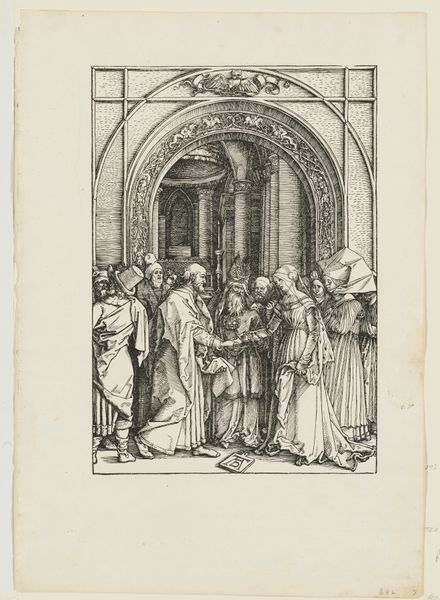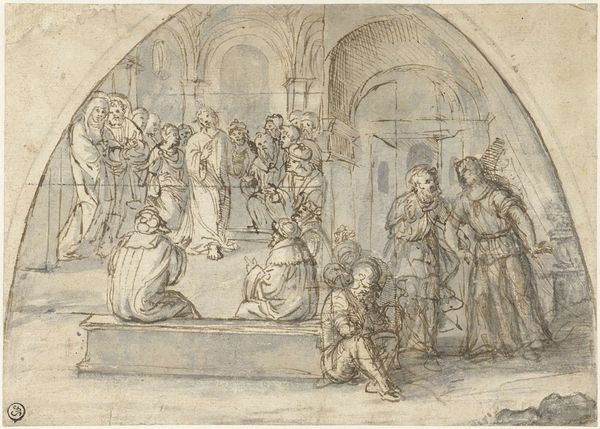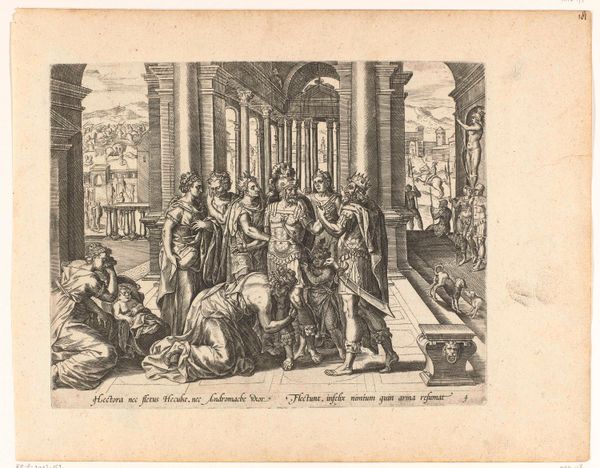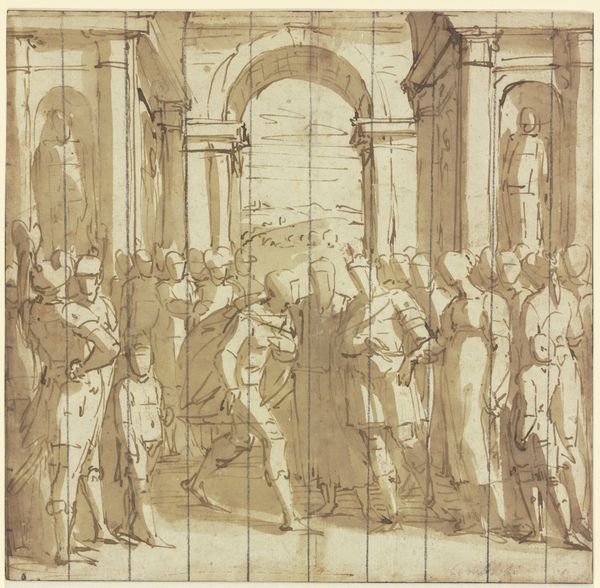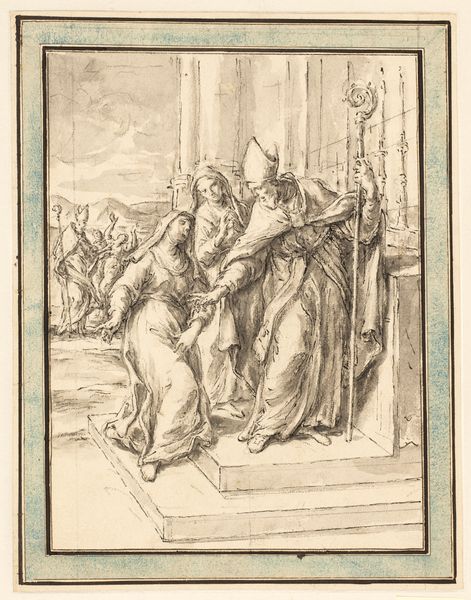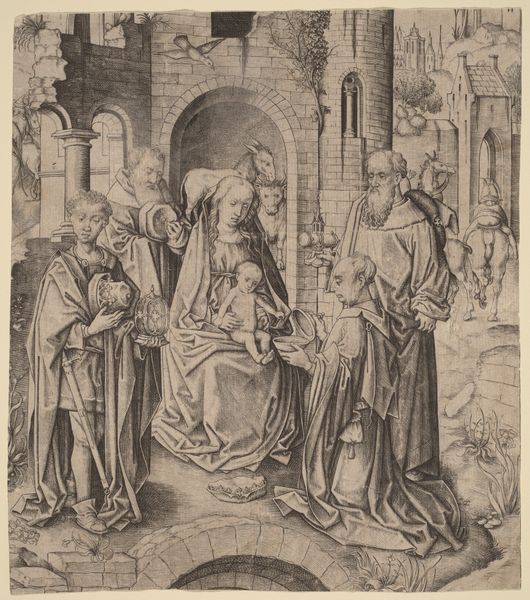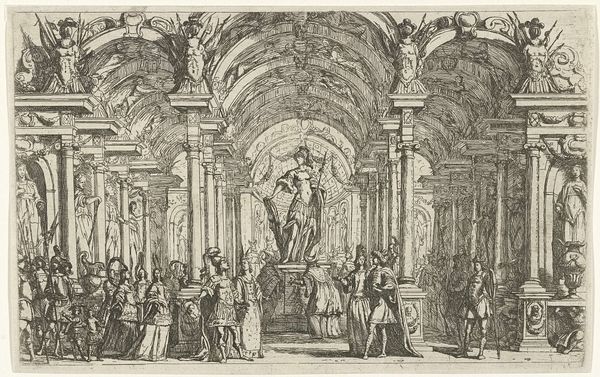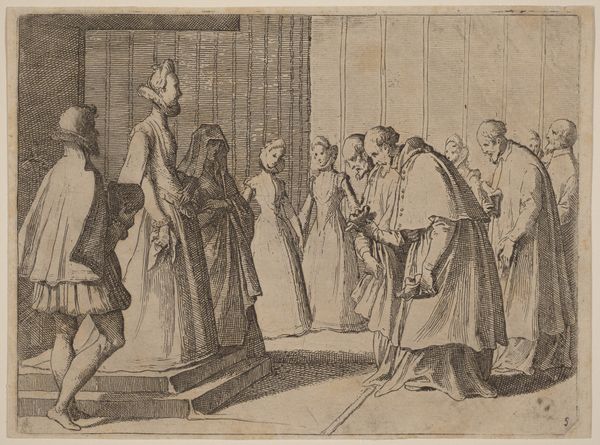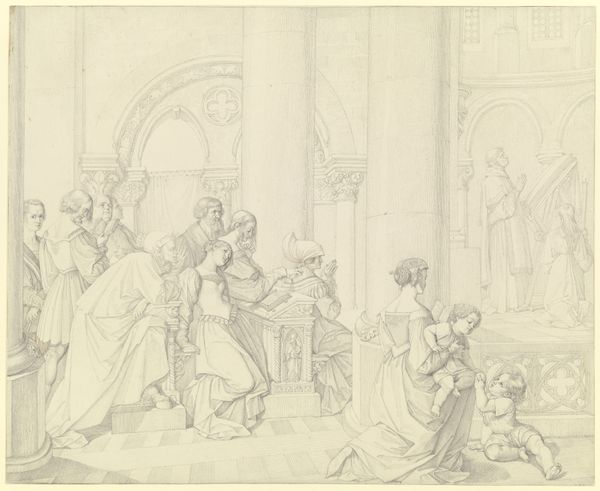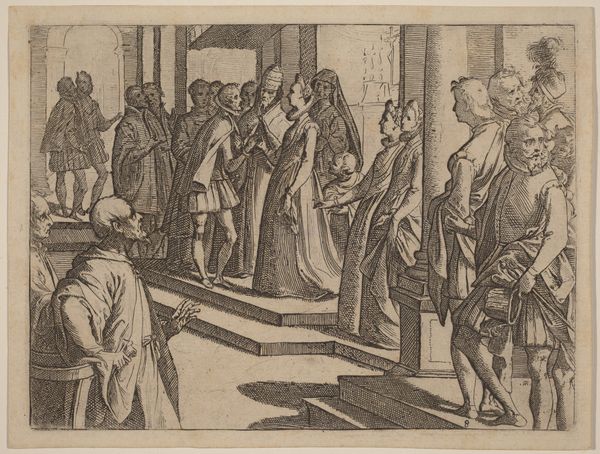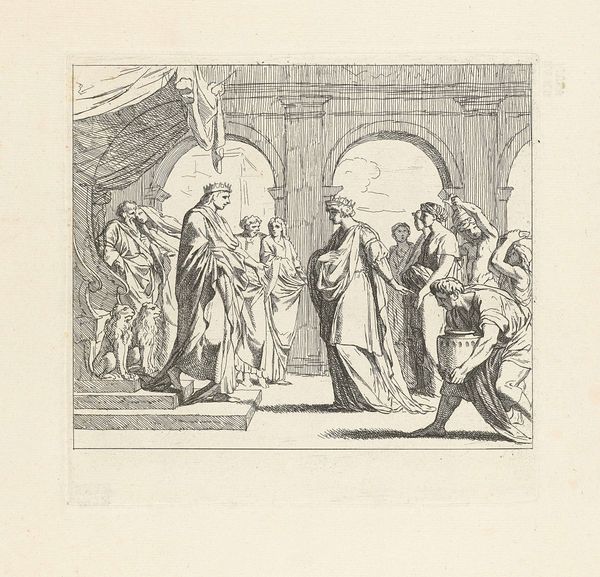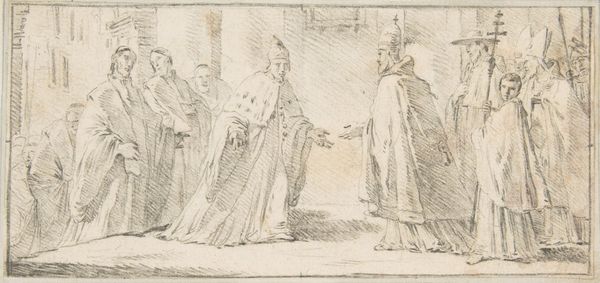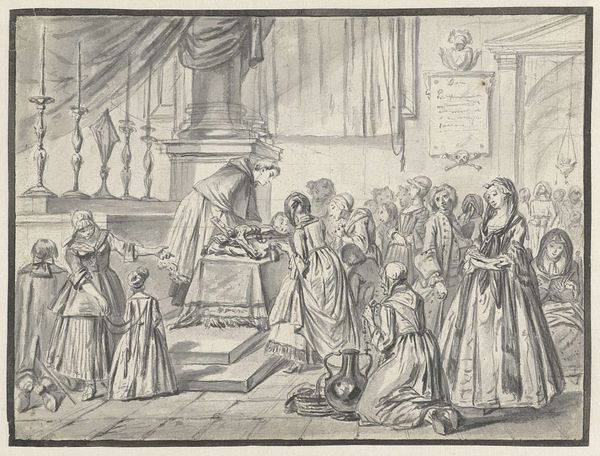
A Crucifix in a Church with Saints Thomas Aquinas, Mary Magdalene, Albertus Magnus, and Others 1655
0:00
0:00
print, engraving
#
baroque
# print
#
figuration
#
line
#
history-painting
#
engraving
Dimensions: sheet (cut within platemark): 21.2 x 27.1 cm (8 3/8 x 10 11/16 in.)
Copyright: National Gallery of Art: CC0 1.0
Johann Heinrich Schönfeld made this print, A Crucifix in a Church with Saints, in the 17th century. The artist uses line to create tone and texture, guiding us through a sacred space to the central image of Christ on the cross. But it's worth asking, what is the public role of this art? Who is it for, and what does it tell us about the culture that produced it? Schönfeld was working in Germany during the Baroque period. This was a time of great religious and political upheaval, with the Thirty Years' War raging across Europe. The Catholic Church was a powerful force in society, and art was often used to promote its message. This print, with its depiction of saints and the crucifixion, speaks to the importance of faith and the Church in people's lives. It acts almost as a form of propaganda. To understand this image more fully, we might look at the history of the Catholic Church in Germany, the lives of the saints depicted, or the artistic conventions of the Baroque period. By doing so, we can appreciate how the meaning of art is always contingent on its social and institutional context.
Comments
No comments
Be the first to comment and join the conversation on the ultimate creative platform.
